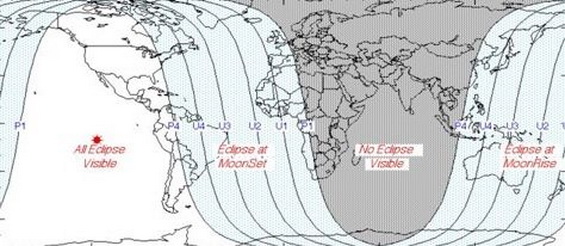A total lunar eclipse will be visible from several locations on Earth, depending on which time zone people live in.
Often the full moon appears coppery red during a total lunar eclipse because the dispersed light from all the Earth’s sunrises and sunsets falls on the face of the moon. Thus the term Blood Moon can be and is applied to any and all total lunar eclipses reports EarthSky.

Above photo is a 2004 lunar eclipse by Fred Espenak
However, the term Blood Moon seems to have special significance for some proponents of Christian prophesy, as a remarkable series of total lunar eclipses – a tetrad – begins. The first one falls on April 14 or 15 . On that night, the brilliant “star” near the April full moon is the red planet Mars, which comes closest to Earth for the year on April 14. Mars and the moon will be near each other as the eclipse takes place, and indeed, as seen from around the world, all night long. North America is in a good place to see this eclipse, by the way, and all four total eclipses of the lunar tetrad.
The height, or midpoint, of the total eclipse occurs at 3:46 a.m. EDT (12:46 a.m. PDT). On this map, you can see the best viewpoints easily:

In addition, a not so well-known bright star called Spica (Virgo Constellation) will also appear very close next to the moon.




Comments are closed.